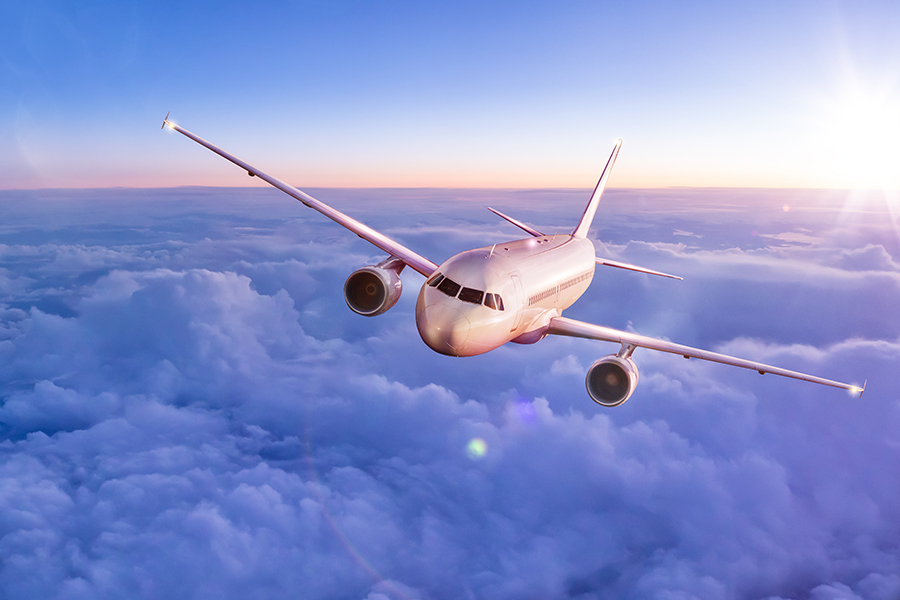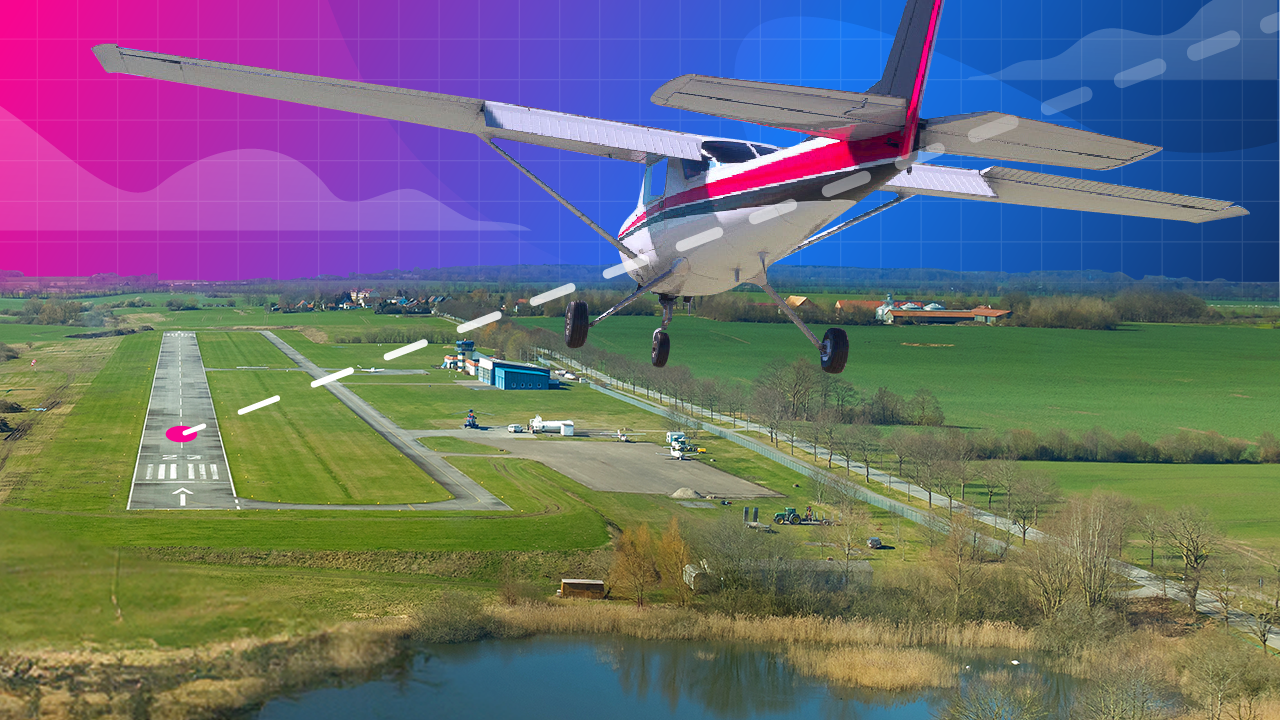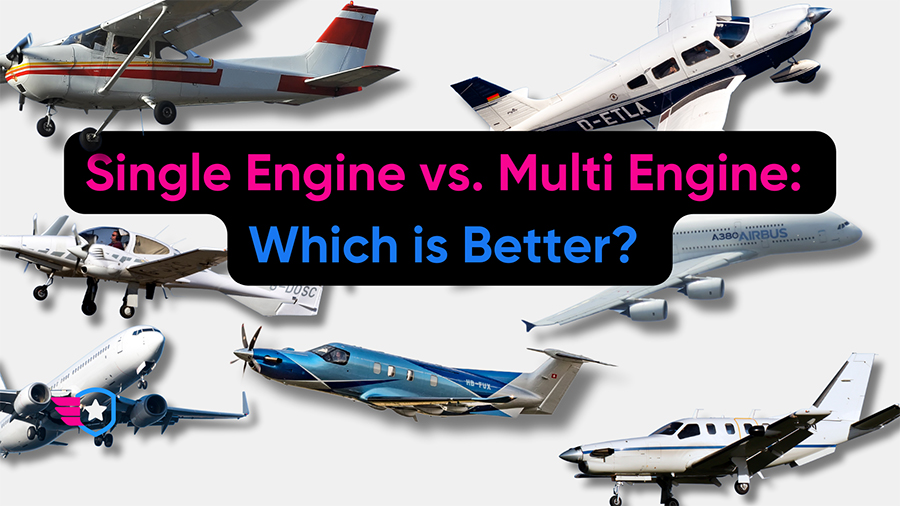So you want to learn to fly, and have decided to get a Private Pilot’s License or PPL! Perhaps you want to fly just for fun or recreational purposes, or maybe you plan to use an aircraft for business travel. Or perhaps the PPL is the first step to a new career as an airline pilot. Or it could be that you just fancy a new challenge.
Whatever your reasons, there are a number of things you will have to do before you can get that coveted license. Becoming a private pilot is not all that difficult, and every year many people of all ages and from all walks of life manage to do it. But it does require a lot of time, a fair amount of money, and a great deal of effort and commitment. There are many things you will need to do.
So in this article we will take a look at the requirements to obtain a PPL…
Are You Eligible to Train to Get a Private Pilot’s License?
You should first make sure that you fulfill the eligibility requirements set out by the Federal Aviation Administration (FAA). Briefly, a private pilot applicant needs to be at least 17 years old, and he or she must able to read, speak and understand English. There is no upper age limit. Then you will need to pass a third class medical examination.
After that you will have to successfully complete all the flight training requirements. You will need to receive ground school training from an authorized instructor, or complete a home study course, and pass the theoretical knowledge exam. And at the very end, you will need to pass a practical exam that consists of a verbal exam and a flight test.
This is not as complicated as it all sounds, though there is quite a lot involved. Let us take a look at each of those requirements in turn.
Pass a Third Class Medical Examination
You actually do not need to have passed your medical exam until you are ready to go solo, which will be part way through your flying training. However, it really is a good idea to do it before you start. Just occasionally, people find out that they have some kind of medical condition that precludes them from holding a pilot’s license, and it would be better if you knew this in advance. You don’t want to spend money on flying lessons, and then find out that he can never fly solo. However, this is unlikely. Prospective pilots often worry about common conditions like shortsightedness, but wearing glasses will not stop you from holding a PPL.
You first need to find a doctor who is an FAA-authorized medical examiner. There are around 6000 of these in the USA, and the FAA has a list with their names and addresses. You will then have to contact one, probably the one closest to your home, and take the medical examination. And hopefully you will then be issued with a document which is both a student pilot certificate and a medical certificate.
Find a Flying School and Instructor
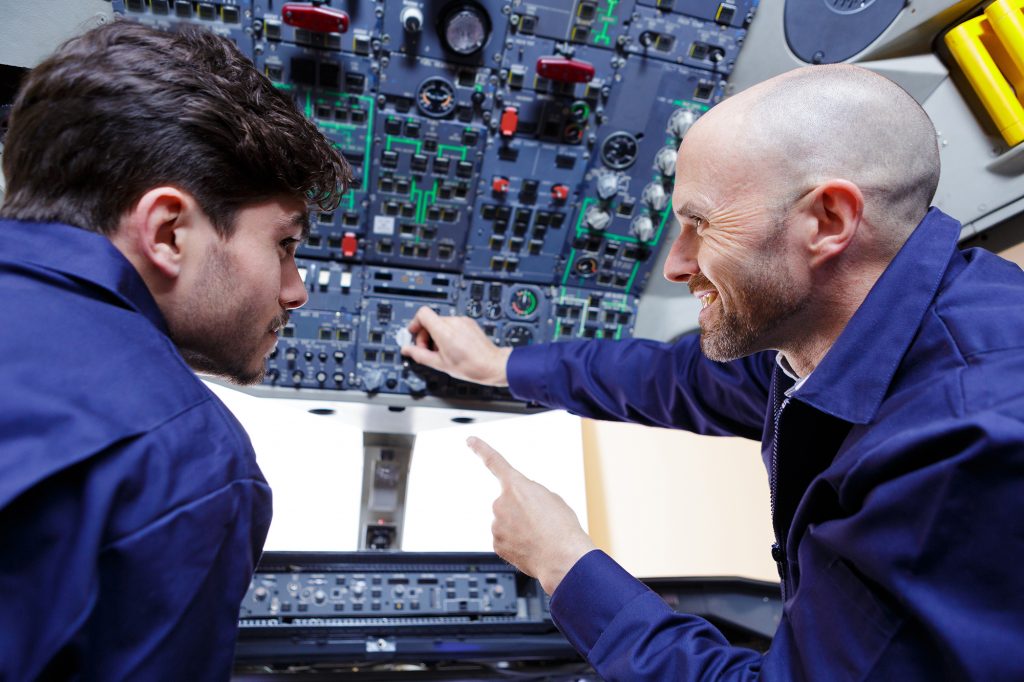
You now need to find a flying school and an instructor. Many people simply go to their nearest flying school and use the instructor allocated to them by the school. There is nothing wrong with this, but it may be wise to shop around a little, and perhaps ask some other pilots whom they would recommend.
Some people simply try to find the cheapest school and instructor, but this is not necessarily a good idea. In aviation, as in most other things, you get what you pay for. Prices do vary, but if the price seems too good to be true, then it probably is!
A few things should be born in mind when deciding where to train. You don’t want to have to travel too far from home, unless you are planning on going on a residential course. Flight training is tiring, particularly in the beginning, and traveling a long way before and after each lesson may be more than you can manage safely and enjoyably. Also, it is important to find an instructor you get on well with, as long hours in an enclosed cockpit with someone you don’t like is not conducive to successful flying training.
It might be best to take an introductory or discovery flight at a couple of flight schools first, and then decide which one seems to suit you best. But don’t worry; if you really pick the wrong one, it is always possible to change school or instructor part way through the course.
Start Your Flying Training
You can now start actually learning to fly. Now, the legal minimum number of flying hours you need to complete for a PPL is 40. However, you should know that almost everyone takes longer than this, often much longer. The national average is said to be around 70 hours, but it is quite common for someone to take over 100 hours to qualify for a PPL. There are all sorts of reasons for this, apart from pilot aptitude. So it is worth ensuring before you start that you have the time for this, and enough money. You really don’t want to have to give up part way through the course because you simply can’t afford it.
Going Solo
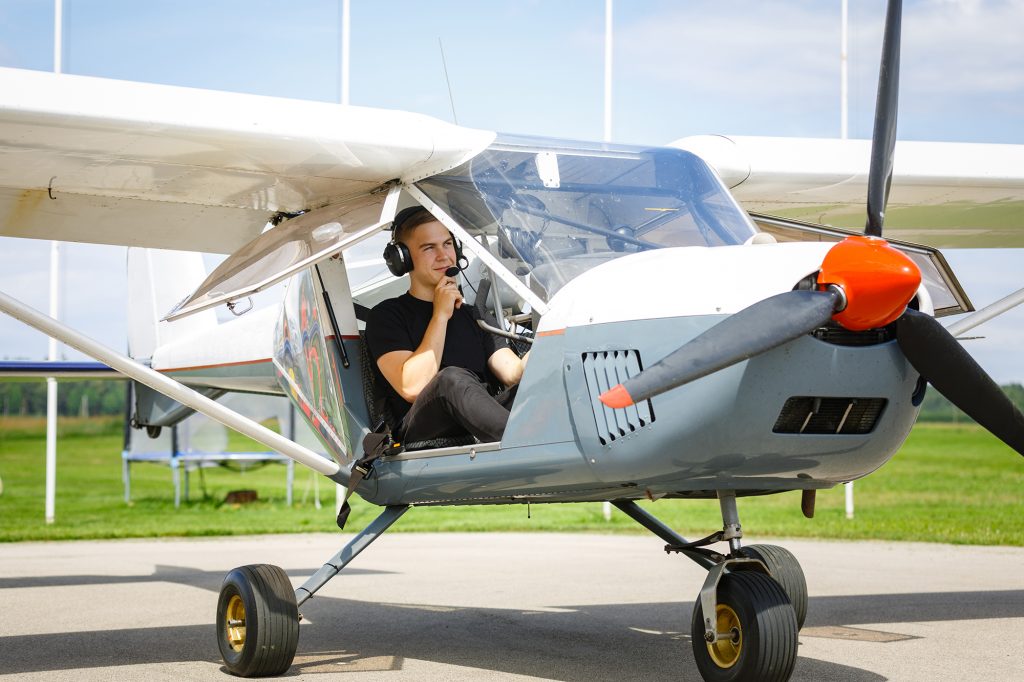
At some stage during your training your instructor will get out of the aircraft, often with little or no warning, and tell you to do a short flight alone. This is known as ‘going solo’, and is such an important part of the course that it is worth mentioning separately. For many pilots ‘going solo’ is the highlight of the course, and their ‘first solo’; may well be something they will remember forever.
It surprises some people to hear that you fly solo long before the end of the PPL course, unlike learning to drive, where you cannot drive alone until you have your license. But flying is different. Most pilots go solo when they can manage to manipulate the flying controls and take off and land safely. After this they still have to learn how to navigate safely, and also some more advanced maneuvres. So after going solo, you will have some more training with your instructor, along with doing some more solo flying. You need to have flown at least 10 hours solo before the issue of your PPL.
Ground School
In addition to the flying, there is a large amount of theoretical knowledge which you will need to acquire. The training for this is known colloquially as ‘ground school’. There is an FAA final test after you complete your ground school, which has 60 questions on all the subjects involved, with a two and a half hour time limit. The pass mark is 70%.
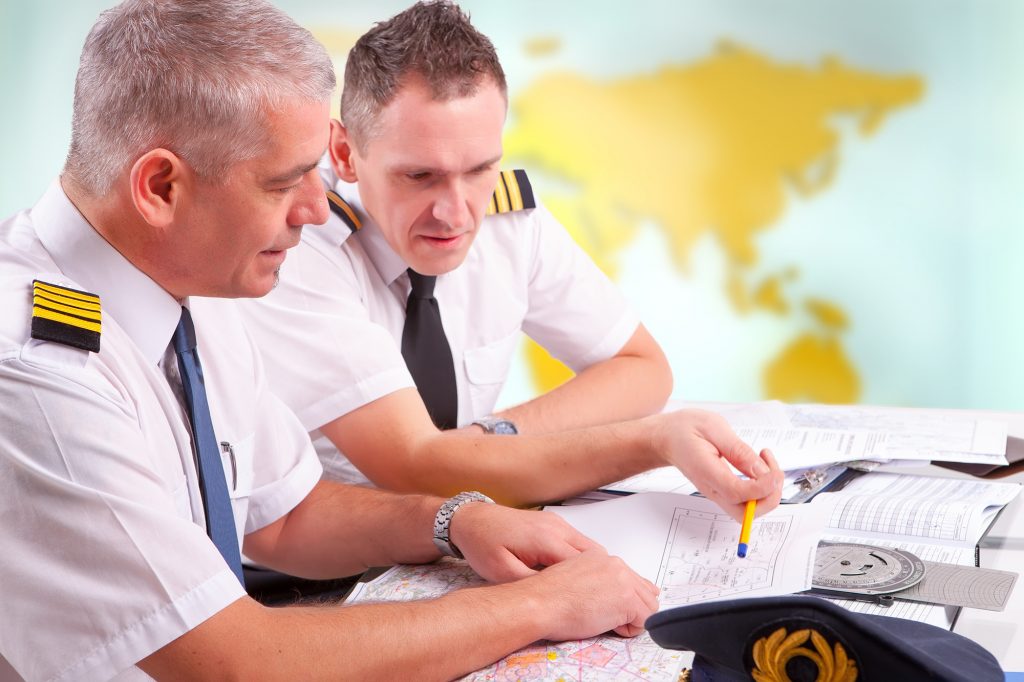
Some people complete the ground school, and take the test, before they even start flying. This is certainly possible, and it means you know a lot about aviation before you start to learn to fly, which could be quite an advantage. On the other hand, much of the theoretical knowledge makes much more sense when you have actually done some flying. So it is swings and roundabouts really, and many people do both flying and ground school together, fitting in the ground school when they can at the same time as their flying training.
As mentioned earlier, you may need to either complete a structured ground school course, using – and paying for – an authorized ground school instructor. This could be quite expensive; ground school instructors often charge around $70 an hour.
Or, at least theoretically, you can study for it alone using home study. This sounds like a good idea in theory. However, if you do this an instructor will still need to sign you off before you can take the final test, since the FAA requires an instructor endorsement before you can actually take the written exam. And it could take several hours for the instructor to verify that you know everything. So in the long run you may not save much doing it this way, and in fact very few people even attempt it.
These days there is a third alternative. There are online ground school courses which can achieve the same thing as an instructor, but at a much lower cost than using a one-to-one instructor. Pilot Institute have one of these courses, and details can be found here. https://pilotinstitute.com/course/part-61-private-pilot/
This 35 hour course has everything you need, and it enables almost everyone to pass the test.
Taking Your Check Ride
When you have completed all your flying training, and also done the ground school and passed the test, it will at last be time for your final check ride!
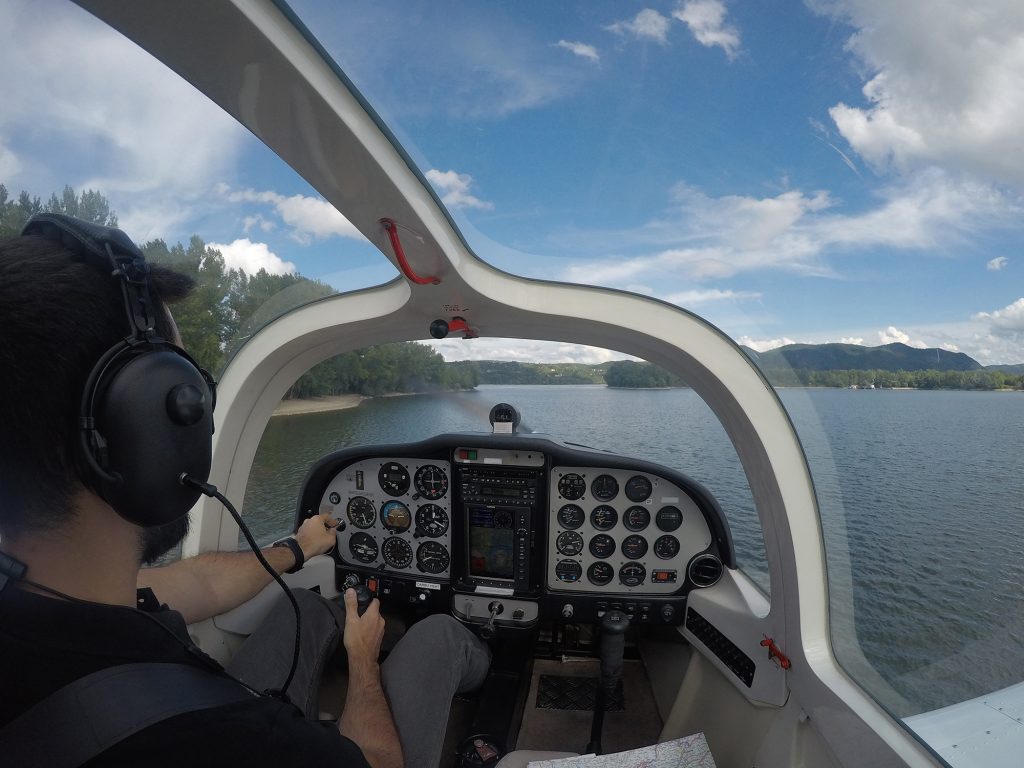
You will need a certain amount of very specific flying experience to be eligible for the check ride. As well as having at least 40 hours of flight time, you will need to have at least 10 hours of solo flying. And, even more specifically, you’ll need at least three hours of cross-country training with your instructor, including three hours of night flying, one cross-country flight that is over 100 nautical miles, 10 takeoffs and landings, and three hours of basic instrument training. On top of that, you’re required to have five hours of solo cross-country flight, and one cross-country flight that is over 150 nautical miles, with landings at three different airports. This sounds rather complicated. But don’t worry; your instructor will most likely have kept track of things, and he will make sure that you have fulfilled all these requirements.
The check ride is given by a designated FAA examiner, and it consists of a verbal exam and a flight exam. The exam can last from about two hours to 6 hours, depending on your level of knowledge and the examiner’s methods. As with most exams, many people find it rather stressful, but it doesn’t need to be. The examiner simply wants to make sure that you are a competent and safe pilot. You just need to do as you are asked by the examiner. Feel free to ask for clarification of anything you don’t understand, and then fly to the best of your ability. Always remember that your instructor would not have told you to put in for the check ride if he didn’t know that you were ready for it.
The ground portion of the exam is usually done first and can last from 30 minutes to a few hours. If this is passed successfully, the examiner will then conduct the flight portion of the exam, which typically lasts 1-2 hours. And, hopefully, he or she will then tell you that you have passed and are now a qualified private pilot!
But don’t worry; if you don’t pass it first time, you can always take it again. There is no shame in doing this, and rest assured that no one will ever ask you if you passed your check ride the first time.
You Can Now Get Your Private Pilot’s License!
After successfully completing your FAA Practical Test, the examiner will assist you in filling out the FAA paperwork online. The examiner will then give you a temporary private pilot certificate to use while you wait for the official FAA certificate to arrive in the mail.
And, finally, you will have your PPL. Congratulations! You are now a qualified private pilot.
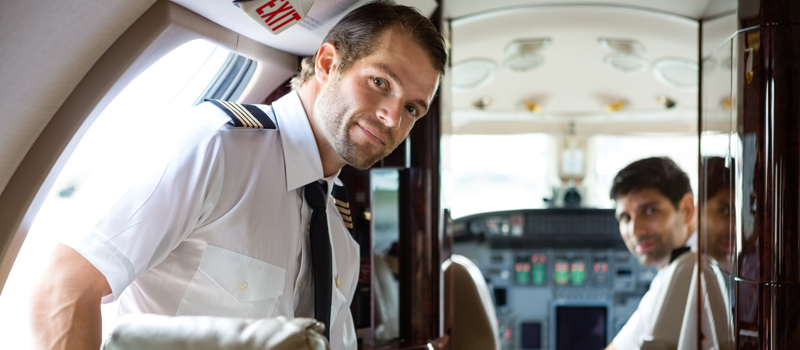
 @pilotinstituteairplanes
@pilotinstituteairplanes

